Los Angeles is Basketball’s Secret Capital
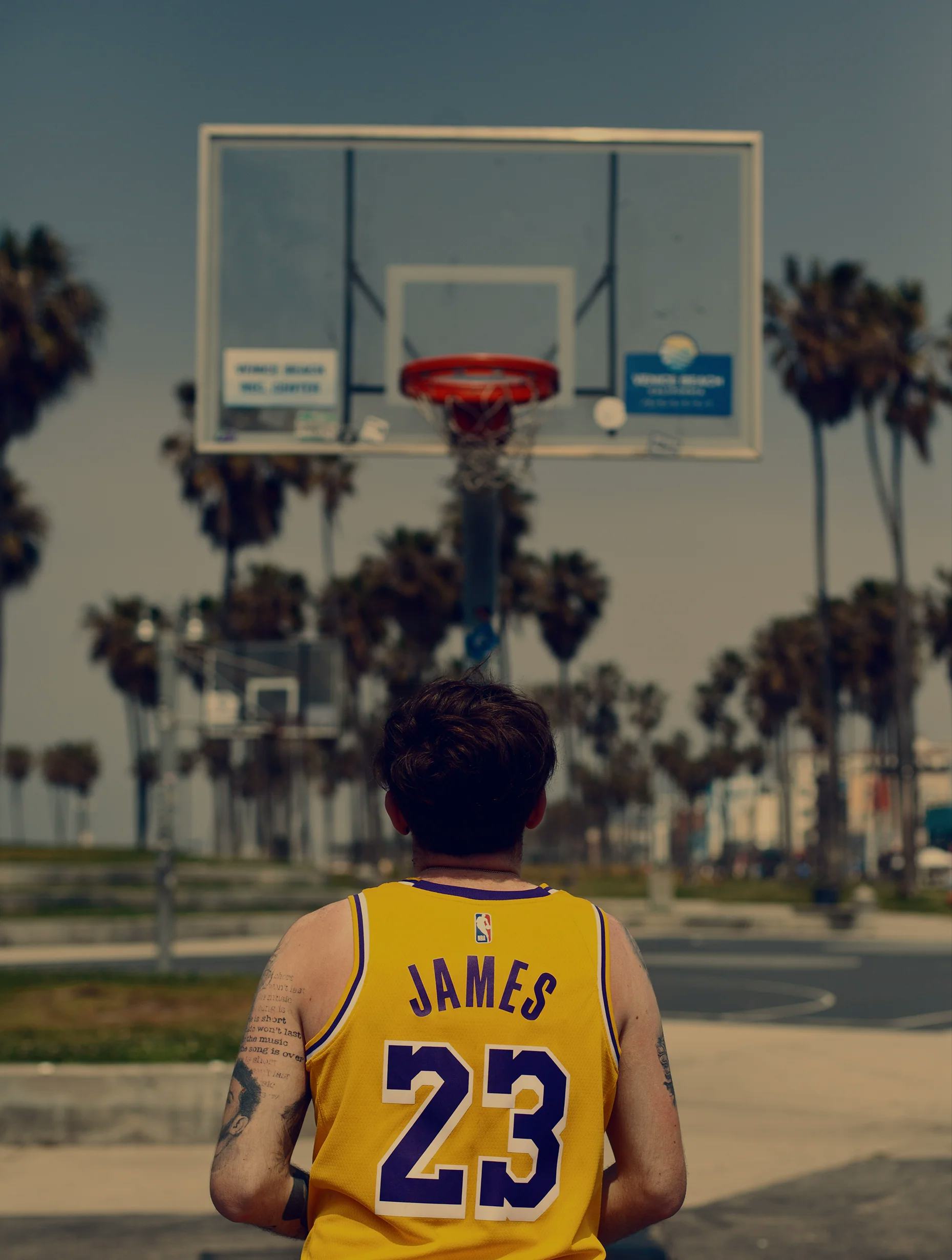
And Venice Beach is the place to find the mega-city's hardcourt soul.
Los Angeles may be too many things. It’s an icon of extreme celebrity and wealth. It’s America’s flagship example of the modern city, simply oozing across the land. It is both the mecca of glossy cinematic fantasy and a big gritty real-world sprawl.
It’s easy to lose sight of any one thing. Maybe the city’s status as a global basketball capital–maybe the basketball capital–isn’t the first thing that comes to mind. And yet the case is strong.
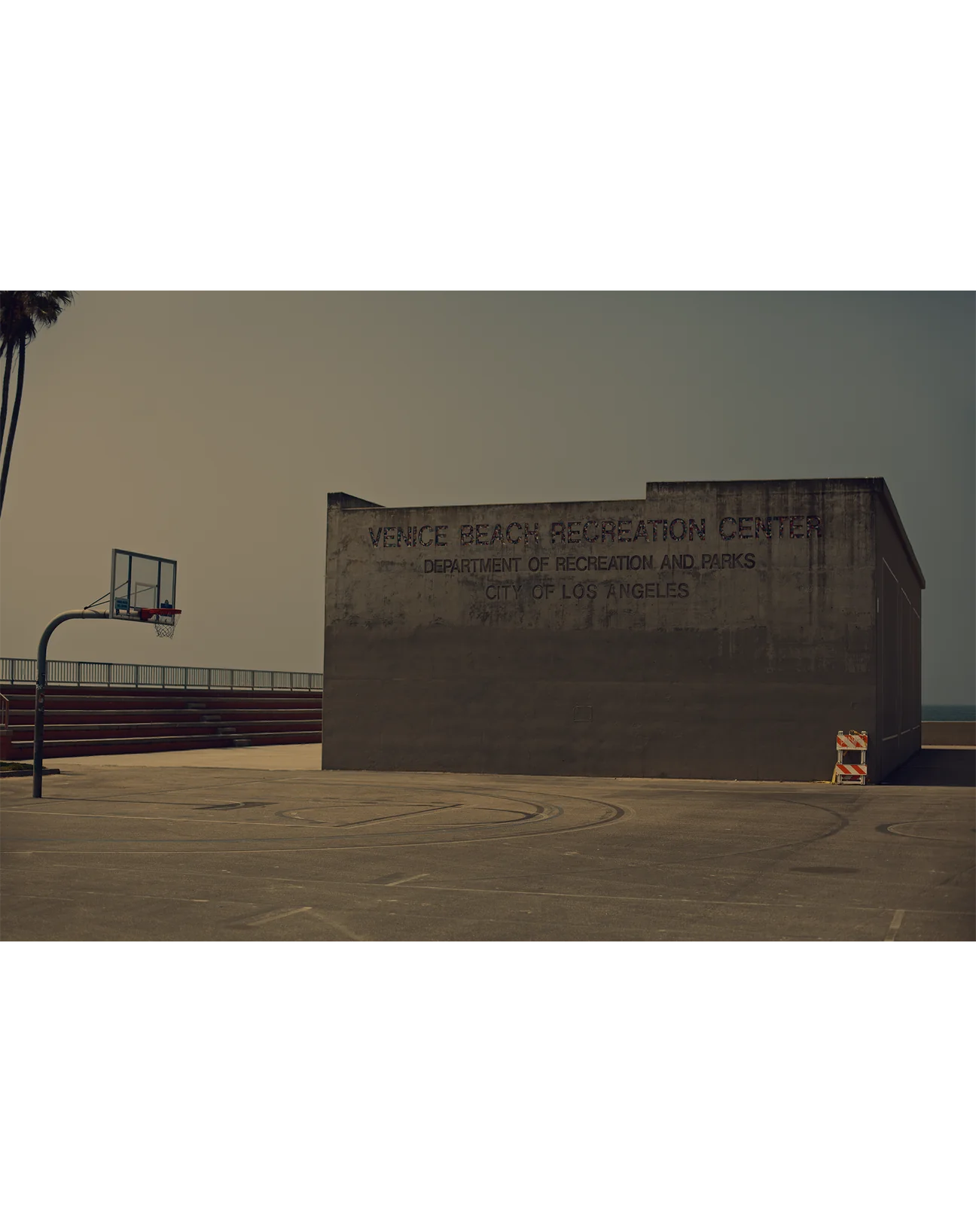
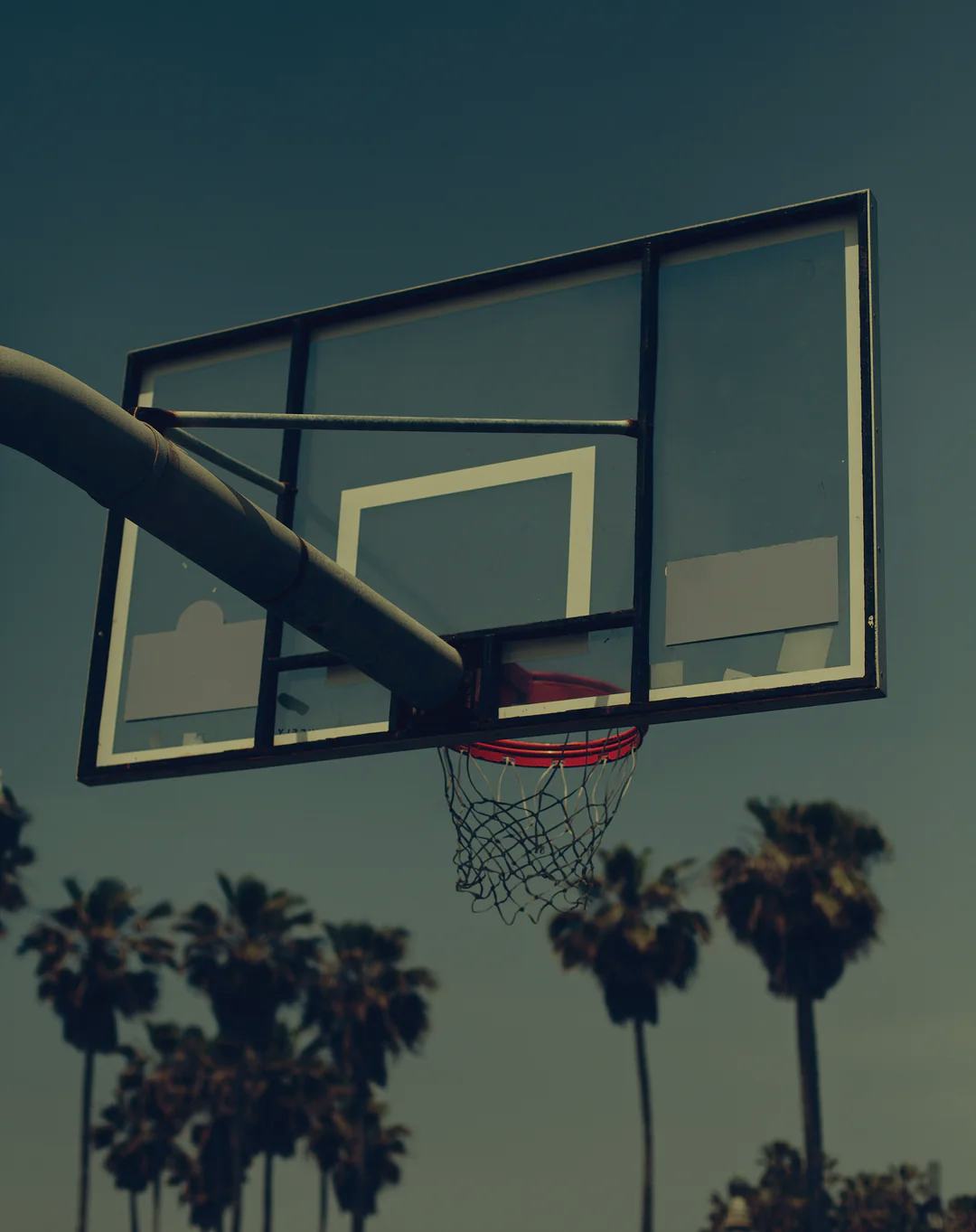
Consider. The city hosts the NBA’s Lakers and Clippers, and the WNBA’s Sparks. The UCLA’s men’s program holds the record for 11 NCAA titles. Former Lakers announcer Chick Hearn invented much of modern basketball’s language–from “slam dunk” to “dribble-drive.” These days, L.A. is the career-climax base for the world’s greatest player, LeBron James. This year, LeBron broke Laker icon [and UCLA alum] Kareem Abdul-Jabbar’s hold on the league’s all-time scoring record. The city fosters top-tier high school programs known for producing outstanding players; two of LeBron’s sons, Bronny and Bryce, are local stars.
Amid it all–the pro and college titles, dozens of Kobe Bryant murals (RIP) hand-painted around the five counties, iconic moments of Magic and Showtime and Jack Nicholson courtside–to find the essence of Los Angeles basketball, you must seek out four courts wedged between the Pacific Ocean and the Venice boardwalk, surrounded by skaters, bodybuilders, and swaying palms.
To see the diversity of Los Angeles and the variety of its basketball–the grassroots state of the art in the basketball capital of, yes, the world–head for Venice.
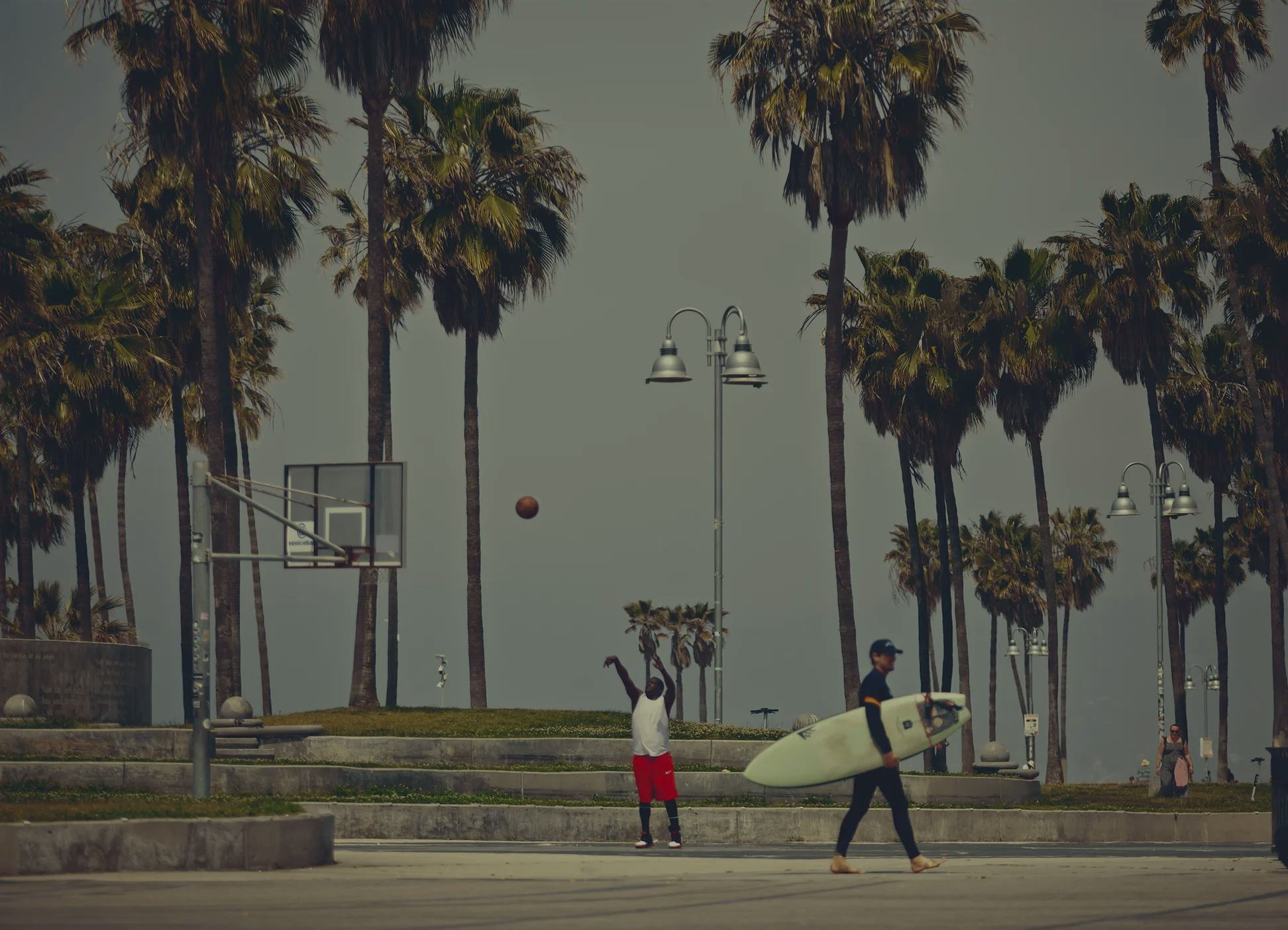
Of all the many places where pick-up basketball thrives in Los Angeles, Venice Beach is the most distinctive scene. Certainly the most “L.A.” On the oceanside courts, the playing style is simultaneously intense and low-key. A typical afternoon may see families playing 2-on-2, loners practicing their free throws, or a league game featuring legendary streetballers, college players, even pros. Kobe once broke his wrist playing pickup in Venice. On a different day, LeBron supposedly lost at H-O-R-S-E.
All of it takes place while thousands of tourists and beachcombers wander by, not to mention dozens more people playing handball or paddle tennis a few feet away, or skateboarding in the Venice Beach Skatepark’s concrete bowls.
These neighborhood courts owe their iconhood in part to White Men Can’t Jump, the Wesley Snipes-Woody Harrelson 1991 buddy comedy about a pair of basketball hustlers who meet in Venice Beach. Now, thirty-one years after the original White Men came out, the movie is getting refreshed–a new version hits theaters May 19, with Sinqua Walls and rapper Jack Harlow assuming Snipes’ and Harrelson’s roles. This will no doubt bring fresh eyes to the Venice courts, just in time for peak Venice hoops.
The best time for Venice basketball–“Veniceball”–is summer, when the Venice Basketball League runs, a community tournament operating since 2006. The competition unfolds place at the height of tourist season, when the Venice boardwalk sees up to 30,000 visitors daily. Which means, weeks from now, on a typical July Sunday, across from the tattoo parlors and taco shops and stalls selling bootie shorts emblazoned “Thick-fil-A,” the dunks will be astounding and the trash talk will be loud.
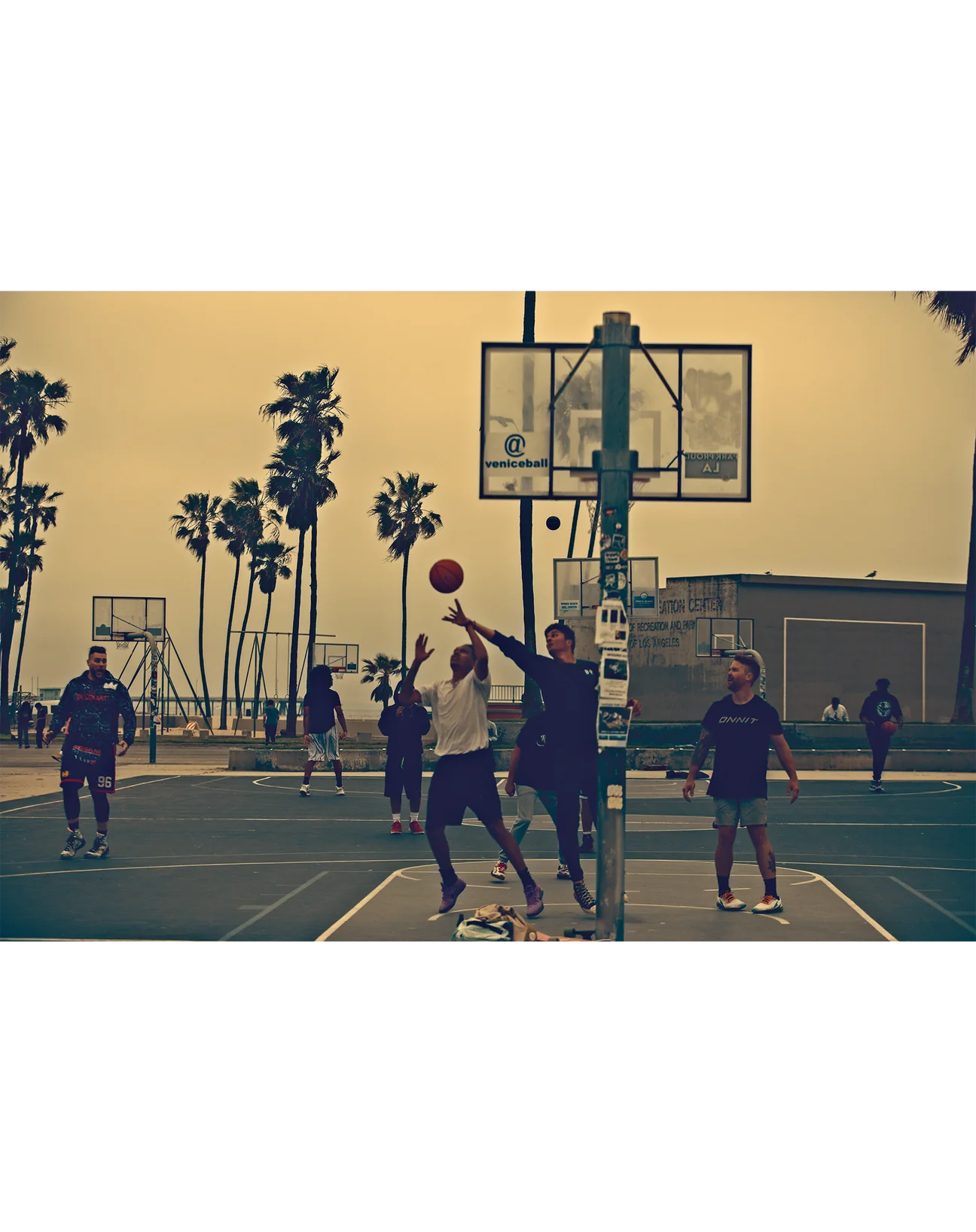

This is not the Venice of five years ago, never mind three decades ago when White Men first could not Jump. For a long time, if Venice was known outside the city, it was for surfing and skateboarding, or Muscle Beach weightlifters like Arnold Schwarzenegger, or simply as yet another grungy Los Angeles neighborhood, albeit with an odd network of waterways plied by canoe. (Venice was built in 1905 by a tobacco baron to be an oceanside resort, complete with canals to mimic the Italian inspiration.) Today the neighborhood is known, at least to locals, as a hothouse of L.A. gentrification. On the boardwalk, the former Venice Beach Freakshow is now a Starbucks. Google is just a few blocks off the beach, so is an all-day Australian restaurant selling $14 chocolate mushroom smoothies. (At the Cow’s End Café, a locals’ coffee shop near the Venice pier, trucker caps for sale say “Make Venice Shit Again.”) At the same time, no neighborhood in the city, aside from Skid Row and parts of Hollywood, has so much homelessness, mental illness, and open-air drug use vividly on display.


Venice has a history of putting its worst foot forward. At one point, it actually looked a lot more like Texas than anything California-esque. Los Angeles contains the United States’ largest urban cache of oil, the Inglewood Oil Field. In the 1930s, months after the Ohio Oil Company struck (black) gold in Venice, dozens of wells were going strong; two years later, Venice was one of California’s most productive fields, producing 46,932 barrels a day. Old postcards show derricks lining the beach like a petroleum-fueled Blade Runner fantasy. Today, new wells are banned in Los Angeles–until 2017, one extracted oil from the grounds of Beverly Hills High School, concealed inside a tower–though many still run, which accounts for the surprise newcomers can feel when they arrive at Los Angeles International Airport and spot pumpjacks dotting the hills.
Los Angeles can feel like an enormous city on the verge of dissipation, crumbling down into some metaphorical (or literal) sinkhole. But so much persists the way the ocean persists, wave after wave and wave. Maybe one day, millennia from now, our artifacts will bubble up in a tar pit and the aliens will wonder what we were like, what we cared about, what we did with this board with the hoop attached.
Even on a gray winter Sunday, mid-March, the Venice courts were busy. Bad Bunny blasted from a speaker lashed to a dolly. At one hoop, a woman instructed a girl on proper shooting technique. At another, two tech bros in stretchy chinos were playing one-on-one. The main court had a bigger game running that looked like a typical L.A. mix: white guys and Black guys, Latino and Asian guys, wearing old T-shirts and mismatched gear. One of the older dudes hung on the perimeter, waiting to fire threes.
A young guy played a bit too rough, swinging elbows when he got the ball. Probably the best player on the court was quick to drive, spotting miscues, creating passing opportunities the others didn’t see. Then a light rain started to fall. The game dissolved. One of the old guys, in a sleeveless sweatshirt faded to dirty pink, wasn’t having it. “It’s not over until I say it’s over!”
Meanwhile, a pair of surfers in wetsuits peeled to their waists crossed the court, toting boards. The old guy soon got on his phone, recruiting other players to come down.
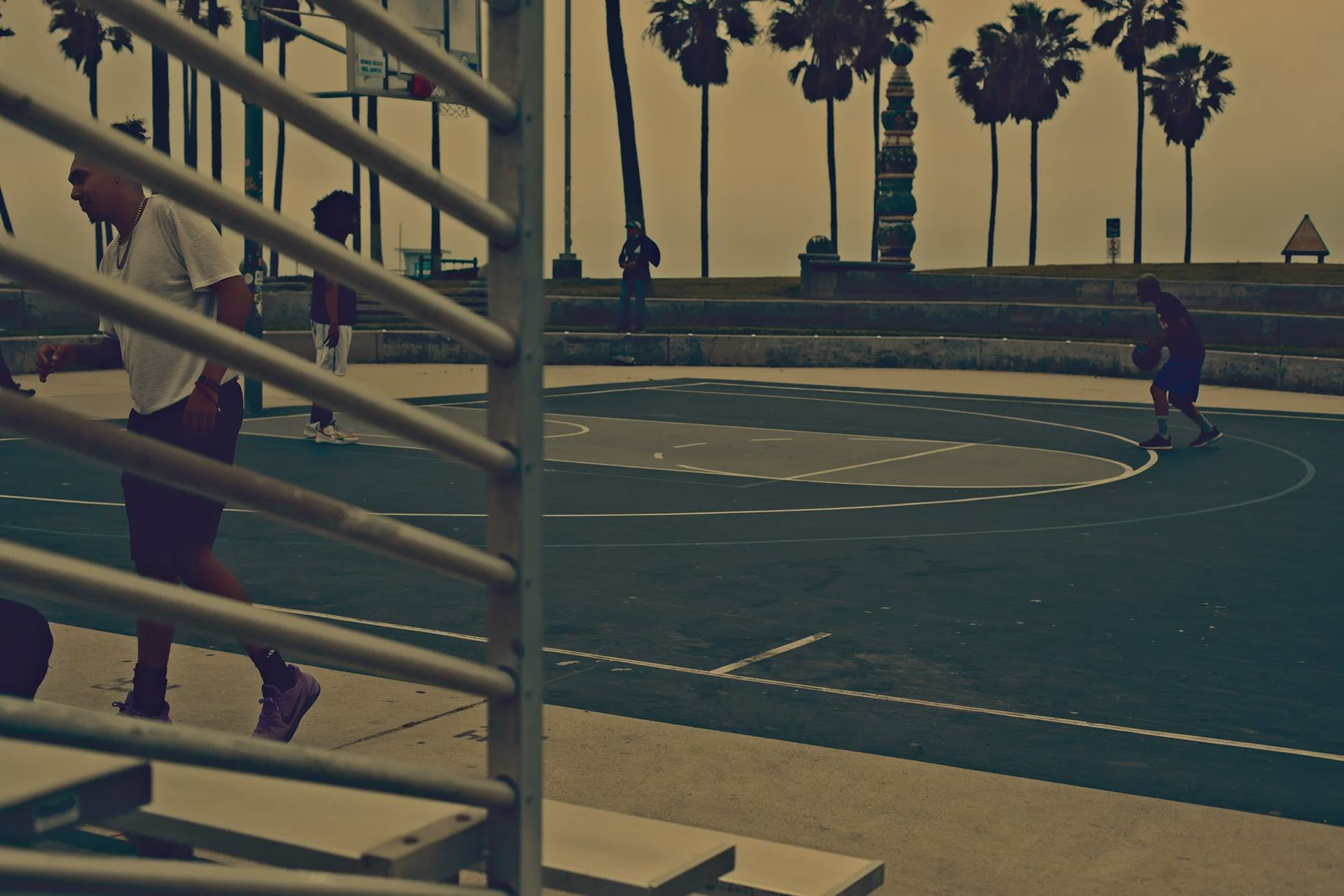

Rosecrans Baldwin
Rosecrans Baldwin is the bestselling author of Everything Now, winner of the California Book Award. Other books include The Last Kid Left and Paris, I Love You but You’re Bringing Me Down. His debut novel, You Lost Me There, was a New York Times Book Review Editors’ Choice. Rosecrans is a frequent contributor to GQ and Travel + Leisure magazines. He's based in Los Angeles.
Rosecrans Baldwin is the bestselling author of Everything Now, winner of the California Book Award. Other books include The Last Kid Left and Paris, I Love You but You’re Bringing Me Down. His debut novel, You Lost Me There, was a New York Times Book Review Editors’ Choice. Rosecrans is a frequent contributor to GQ and Travel + Leisure magazines. He's based in Los Angeles.




